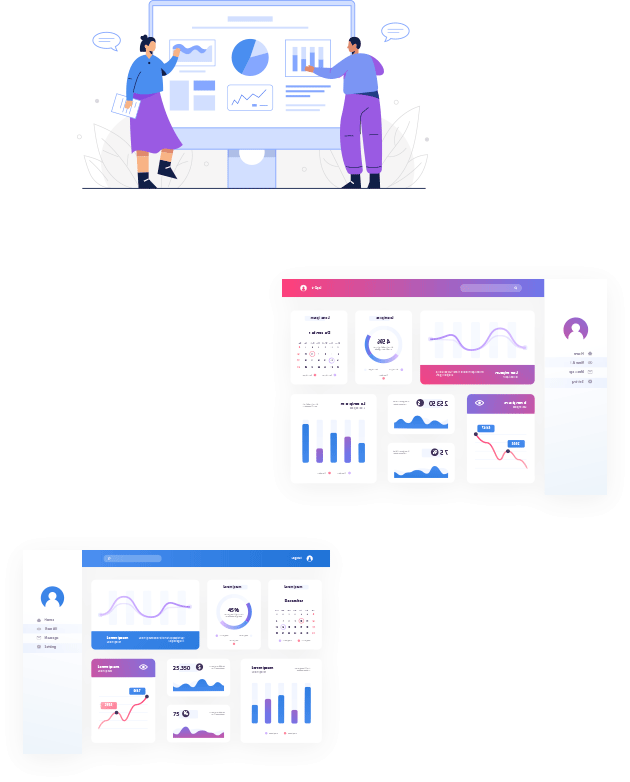StructuralSense
Machine learning for structural health
StructuralSense is an app that has made using machine learning to make your non destructive testing results more accurate that saves your time and resources.

App Maintenance
App will be updated frequently with the newer machine learning models so the accuracy will be increased with the new data.
Rocket Speed of App
You are allowed to use the Chain App Dev HTML template. Feel free to modify or edit this layout.
Multi Workflow Idea
If this template is beneficial for your work, please support us a little via PayPal. Thank you.
24/7 Help & Support
Lorem ipsum dolor consectetur adipiscing elit sedder williamsburg photo booth quinoa and fashion axe.
Solution Architecture


Data Collection: Initially, we gather the required dataset from various sources. This could involve web scraping, API integration, or any other means of acquiring data. The collected data is then preprocessed to ensure its quality and suitability for training.
Data Storage: The preprocessed dataset is stored in a database. Choose a suitable database system based on the requirements of your application, So we use mongodb as our database because it provides more features to work with machine leanring model.
Model Training: The ML model is developed and trained using the dataset stored in the database. This involves selecting an appropriate algorithm or framework for the ML task at hand. The training process might require additional preprocessing steps, feature engineering, and model optimization techniques to enhance performance.
Model Storage: Once the training is complete, the trained ML model is stored in a persistent storage location. This could be a file system, a cloud storage service, or a dedicated ML model repository. Ensure that the model is stored in a format compatible with the deployment process and can be easily accessed when needed.
Mobile Application Integration: The trained ML model is integrated into the mobile application. This involves embedding the model within the application's codebase or connecting to an external model-serving infrastructure. If necessary, optimize the ML model for mobile deployment, considering resource limitations and performance constraints.
User Interaction: Users can now interact with the mobile application, which leverages the integrated ML model to provide relevant functionality or predictions. The application may communicate with backend servers or APIs to fetch additional data or perform computations, depending on the requirements of the ML model.
Technology Stack

Flutter is a cross-platform mobile app development framework that enables developers to build apps for iOS and Android using a single codebase. It provides fast development with its hot reload feature, allowing developers to see instant changes as they modify the code. Flutter's rich set of pre-designed widgets and its expressive UI framework make it easy to create visually appealing and responsive mobile apps. Additionally, Flutter offers good performance and access to native device features, making it a popular choice for mobile app development.
MongoDB is a NoSQL database that can be used for storing machine learning models. With its flexible schema and document-based structure, MongoDB provides a convenient way to store and retrieve ML models. It offers scalability, high availability, and easy integration with popular programming languages. Storing ML models in MongoDB allows for efficient management and retrieval, enabling seamless integration of the models into applications for real-time predictions and analysis.
Python is a widely used programming language for training machine learning models. Its rich ecosystem of libraries, such as NumPy, Pandas, and scikit-learn, provides extensive functionality for data manipulation, preprocessing, and model training. Python's simplicity, readability, and extensive community support make it an ideal choice for implementing and experimenting with various ML algorithms. Python's integration with popular frameworks like TensorFlow and PyTorch further enhances its capabilities for training complex neural network models.

Timeline


Project Management

Using the Agile method for project management involves sprint planning, where the project is broken down into smaller sprints. During each sprint, the team works on relevant tasks and executes the work. At the end of each sprint, a sprint review is conducted, where the team meets with the project owner to receive feedback and assess progress. This iterative approach ensures continuous collaboration, adaptability, and responsiveness to changes throughout the project lifecycle.

Mobile Application

We use our mobile application to bridge the gap between Destructive and non destructive tests. This app will have simple interfaces and continuous flow which will make it easy to use in the field

Application Features

Continuos flow is something that user won't need to press on every textfield to enter data. He or She can insert data in single flow. Once all the data added even there's a predict button, there is no need to press that button. Result will be automatically shown.
To increase usability we aligned the predict and clear button to right (Left align feature will be add in near future). So Field engineer can use the application just using a single hand.
And the typing other numerical characters is disabled through the application. By doing that entering minus marks, comma and spaces is avoided. By doing it chance of adding wrong data to the fields reduced.
Problem Domain

In the field of civil engineering and infrastructure management, ensuring the structural integrity and health of buildings and other structures is of paramount importance. Traditional methods for assessing structural health often rely on non-destructive testing techniques, which provide valuable insights but can be limited in terms of accuracy and reliability.
Recognizing the limitations of non-destructive testing results, our project, named Structural Sense, aims to revolutionize the way structural health assessments are performed. We leverage the power of machine learning to enhance the accuracy and effectiveness of structural health evaluations.
One of the key challenges we encountered was the inherent inaccuracies associated with non-destructive testing methods. To overcome this, we took a novel approach by training our machine learning model using both non-destructive testing results and destructive testing data for the same structures. By incorporating data from destructive testing, which offers more precise and comprehensive information, we were able to develop a model that can provide more accurate and reliable assessments of structural health.
The Structural Sense app focuses on three essential factors: cement type, soil type, and HBF (Highly Brittle Fiber). By inputting these parameters along with non-destructive testing results, the app utilizes our trained machine learning model to provide a comprehensive structural health evaluation.
Our project addresses the critical need for accurate and efficient structural health assessments in the construction and infrastructure industries. By combining the strengths of non-destructive and destructive testing methods, Structural Sense offers a powerful tool that enables engineers and professionals to make informed decisions about the condition of structures, identify potential issues, and take proactive measures to ensure their safety and longevity.
Our Solution

With the Structural Sense app, we aim to revolutionize the way structural health assessments are conducted, ultimately contributing to the advancement of infrastructure management practices and the overall safety of our built environment. By leveraging machine learning algorithms and incorporating destructive testing data, our app provides more accurate and reliable assessments of structural health compared to traditional non-destructive testing methods alone.
The app allows users to input parameters such as cement type, soil type, and HBF, along with non-destructive testing results. Our trained machine learning model then analyzes this data to provide a comprehensive evaluation of the structural health of a given building or structure. This information empowers engineers and professionals to make informed decisions, identify potential issues, and take proactive measures to ensure the safety and longevity of structures.
By combining the strengths of non-destructive and destructive testing methods, Structural Sense offers a powerful tool that enhances the accuracy and effectiveness of structural health assessments. This innovative approach not only improves the reliability of assessments but also saves time and resources by minimizing the need for extensive destructive testing.
Overall, the Structural Sense app represents a significant advancement in the field of structural health assessment. It provides a reliable and efficient solution that leverages machine learning to deliver accurate evaluations, ultimately contributing to safer and more resilient infrastructure.
App Maintenance
App will be updated frequently with the newer machine learning models so the accuracy will be increased with the new data.
Rocket Speed of App
You are allowed to use the Chain App Dev HTML template. Feel free to modify or edit this layout.
Multi Workflow Idea
If this template is beneficial for your work, please support us a little via PayPal. Thank you.
24/7 Help & Support
Lorem ipsum dolor consectetur adipiscing elit sedder williamsburg photo booth quinoa and fashion axe.
About What We Do & Who We Are

Group of Computer Engineering Undergraduates that interested in machine learning and mobile app development who hope to make the world better place.
Group Members
Dr. Samith Buddhika
Project Owner
Nimnad Mihiranga Kodituwakku
E/18/180
Nisala Induwara
E/18/266
Shamod Wijerathne
E/18/397
